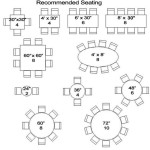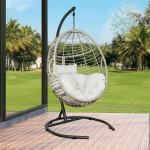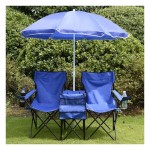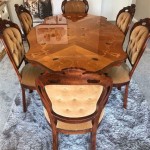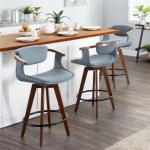The Allure and Practicality of Barrel Accent Chairs with Ottomans
The barrel accent chair with ottoman represents a stylish and functional seating solution for a variety of living spaces. This furniture pairing, characterized by the chair's curved back and the ottoman's supportive role, transcends mere decoration, offering both aesthetic appeal and enhanced comfort. Understanding the design nuances, material options, and functional considerations regarding barrel accent chairs with ottomans is crucial for making informed purchasing decisions and maximizing their utility within a home.
The barrel chair, often referred to as a tub chair, distinguishes itself through its rounded, enclosed back. This design offers a sense of security and creates a cozy seating experience. The included ottoman further elevates this experience by providing a place to rest one's feet, promoting relaxation and comfort. The combination is often employed in living rooms, bedrooms, reading nooks, and even office spaces to introduce a touch of sophistication and comfort.
The versatility of barrel accent chairs with ottomans extends to their adaptability to diverse interior design styles. From modern minimalist aesthetics to traditional and rustic decors, these furniture pieces can be seamlessly integrated. The selection of upholstery fabric, leg material, and overall design details allows for customization that complements and enhances the existing environment.
Understanding the Design Elements
The design of a barrel accent chair with ottoman encompasses several key elements that contribute to its overall aesthetic and functional performance. The chair's back curve, seat depth, and armrest height are critical aspects influencing seating comfort. The ottoman's size, shape, and height must be considered in relation to the chair to ensure ergonomic harmony. Furthermore, the material choices for both the chair and ottoman play a significant role in determining their durability, texture, and visual appeal.
The back curve of the chair is often designed to provide lumbar support, promoting correct posture and reducing strain during prolonged seating. Variations exist, ranging from gentle curves that offer subtle support to more pronounced curves that cradle the back. Seat depth is another crucial factor, influencing the amount of legroom and overall comfort. A seat that is too shallow may feel restrictive, while one that is too deep may require additional back support.
Armrest height is also crucial for comfort. Ideally, the armrests should be positioned at a height that allows the user to rest their arms comfortably without having to strain their shoulders or neck. The ottoman's height should be carefully considered in relation to the chair's seat height. An ottoman that is too low may not provide adequate support, while one that is too high may feel awkward and uncomfortable. The ottoman's size and shape should also be proportional to the chair, ensuring a balanced and aesthetically pleasing appearance.
Upholstery materials play a pivotal role in defining the chair and ottoman's overall aesthetic and durability. Common choices include linen, velvet, leather, and synthetic fabrics. Linen offers a breathable and natural texture, lending a casual and relaxed vibe. Velvet provides a luxurious and plush feel, adding a touch of elegance. Leather is renowned for its durability and timeless appeal, while synthetic fabrics offer stain resistance and easy maintenance. The selection of fabric should align with the desired aesthetic and the level of anticipated use.
The leg material further influences the chair and ottoman's overall style and stability. Wood legs, often crafted from solid hardwoods such as oak or walnut, impart a sense of warmth and traditional elegance. Metal legs, typically made from steel or chrome, offer a modern and minimalist aesthetic. The choice of leg material should complement the upholstery fabric and overall design style.
Exploring Material Options and Durability
The selection of materials for a barrel accent chair with ottoman directly affects its durability, comfort, and overall aesthetic. Focusing on the frame materials, upholstery fabrics, and filling materials is essential for ensuring longevity and desired comfort levels. A well-constructed frame provides structural integrity, while high-quality upholstery fabrics and fillings contribute to a comfortable and aesthetically pleasing seating experience.
The frame of a barrel chair is the foundational element that determines its stability and longevity. Hardwoods like oak, maple, and birch are frequently employed due to their strength and resistance to warping. Engineered woods, such as plywood or MDF, can also be used, offering a more cost-effective alternative while still providing adequate support. Regardless of the material, it is crucial to ensure that the frame is properly constructed with reinforced joints and secure fasteners.
Upholstery fabrics must withstand daily wear and tear while maintaining their aesthetic appeal. Natural fibers such as cotton, linen, and wool offer breathability and comfort but may be prone to staining and fading. Synthetic fibers like polyester and microfiber are more resistant to stains and fading, making them suitable for high-traffic environments. Leather, both genuine and faux, provides durability and a luxurious appearance but requires regular maintenance to prevent cracking and discoloration.
Filling materials significantly affect the comfort level of the chair and ottoman. High-density foam provides firm support and retains its shape over time. Fiberfill offers a softer and more plush feel but may compress more quickly. Down feathers, while luxurious, require regular fluffing to maintain their loft. A combination of different filling materials is often used to achieve a balance of support and comfort.
Durability is a key consideration when selecting a barrel accent chair with ottoman. The frame should be robust enough to withstand regular use, and the upholstery fabric should be resistant to tearing, staining, and fading. The filling materials should be resilient and maintain their shape over time. Regular cleaning and maintenance are essential for extending the lifespan of the furniture and preserving its appearance.
Functional Considerations and Space Optimization
Beyond aesthetics, the functional aspects of a barrel accent chair with ottoman should be carefully considered to ensure it effectively serves its intended purpose and integrates seamlessly into the designated space. These functional considerations include the chair's size and scale, the ottoman's mobility, and the overall ergonomics of the pairing. Optimizing the placement and utilization of these furniture pieces can significantly enhance the comfort and functionality of a room.
The size and scale of the chair and ottoman should be proportionate to the room in which they are placed. A large barrel chair and ottoman may overwhelm a small space, making it feel cramped and cluttered. Conversely, a small chair and ottoman may look insignificant in a large room. Measuring the available space and carefully considering the dimensions of the furniture pieces is crucial for achieving a balanced and harmonious aesthetic.
The ottoman's mobility can also affect its functionality. Some ottomans are designed with casters or wheels, allowing them to be easily moved around the room. This can be particularly useful in multi-functional spaces where the ottoman may be used for different purposes. Other ottomans are stationary, providing a more stable and permanent seating solution. The choice between a mobile and stationary ottoman depends on the individual's needs and preferences.
Ergonomics play a vital role in ensuring the comfort and usability of the chair and ottoman. The chair's seat height should allow the user to sit with their feet flat on the floor and their knees bent at a comfortable angle. The ottoman's height should be such that it supports the legs without causing strain or discomfort. The back of the chair should provide adequate lumbar support, promoting correct posture and reducing fatigue.
Space optimization is a key consideration when incorporating a barrel accent chair with ottoman into a room. The furniture should be placed in a location that is easily accessible and does not obstruct traffic flow. Consider placing the chair and ottoman near a window to take advantage of natural light or in a corner to create a cozy reading nook. The placement of the furniture should also complement the existing layout and design of the room.
In conclusion, selecting the right barrel accent chair with ottoman involves careful consideration of design elements, material options, and functional considerations. By paying attention to these factors, individuals can choose furniture pieces that not only enhance the aesthetic appeal of their homes but also provide lasting comfort and utility.

Magic Home 51 In Swivel Accent Barrel Sofa Linen Fabric Lounge Club Big Round Chair With Storage Ottoman And Pillows Light Gray

Uixe Gray Chenille Upholstered Swivel Accent Barrel Chair With Storage Ottoman And Pillows Set Of 1

Belleze Accent Chair With Ottoman Set Of 2 Curved Back Living Room Stylish Barrel Club And Footrest Upholstered Round Tub Reading

Muumblus Chenille Swivel Barrel Accent Chair With Storage Ottoman Oversized Comfy Armchair For Living Room Bedroom Gray

Yaheetech Accent Chair With Ottoman Foot Rest

Colamy Sherpa Barrel Chair Khaki Velvet Accent With Storage Ottoman Set

Modern Barrel Accent Chair With Ottoman Single Armchair Home Lazy Sofa Club Seat Ebay

Velvet Accent Chair With Ottoman Modern Tufted Barrel Set For Living Room Bedroom Atlantic Fine Furniture Inc

Easyfashion Velvet Club Accent Chair And Ottoman Set Gray

Swivel Barrel Chair With Ottoman Accent Chairs Armchair For Li
